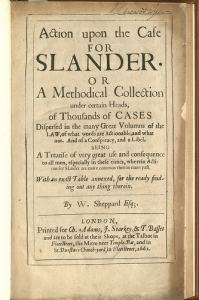By Hanna Diamond
I. Introduction
Nona Gaprindashvili, “a pioneer of women’s chess,” is making the first move and suing Netflix over a false statement made in the Netflix series, The Queen’s Gambit (the “Series”). [1] The Series was based on a fictional novel, The Queen’s Gambit (the “Novel”),[2] about an “American chess prodigy Beth Harmon,” and her determination to “take on the world’s top Grandmasters.”[3]
Gaprindashvili filed a First Amended Complaint (“Complaint”) in the Central District of California pursuant to diversity jurisdiction on September 20, 2021.[4] While Netflix has yet to answer Gaprindashvili’s Complaint, it appears that it intends to defend the lawsuit given its statement that “Netflix has only the utmost respect for Ms. Gaprindashvili and her illustrious career, but we believe this claim has no merit and will vigorously defend the case.”[5] Gaprindashvili believes that she is “[serving] as an example to wronged people by reminding them that they have the right to fight back against such cynical misconduct.”[6]
II. False Light Invasion of Privacy and Defamation Per Se
Gaprindashvili is bringing suit for false light invasion of privacy (“false light”) and defamation per se, but she asserts that the two causes of action are “alternative theories of liability” and does not seek a “double recovery.”[7] When a complainant brings both a false light and defamation claim, “the false light claim is essentially superfluous, and stands or falls on whether it meets the same requirements as the defamation cause of action.”[8]
Both claims have three elements, but the first two elements are substantially similar and require the plaintiff to show (1) a publication or broadcast of a false statement, and (2) a demonstration by clear and convincing evidence that the statement was published or broadcasted with actual malice.[9] Since the first two elements are identical, this Blog Post first looks at whether there was (1) a publication of a false statement, and (2) actual malice.
A. False Statement
Gaprindashvili, as the plaintiff in the lawsuit, alleges that Netflix published a false statement when the Series (1) stated that she never competed against men, and (2) portrayed her as Russian.[10] By 1968, the period portrayed in the Series, Gaprindashvili had competed against “at least 59 male chess players”[11] and had been doing so for 5-6 years. [12]
Additionally, Netflix falsely described Gaprindashvili as Russian when she is Georgian.[13] Gaprindashvili alleges that Georgians “suffered under Russian domination when part of the Soviet Union.”[14] When Gaprindashvili confronted Netflix over the false statements, Netflix claimed that the statement was “innocuous.”[15] Gaprindashvili’s Complaint described Netflix’s response as an “arrogant refusal to take responsibility for its actions . . . given the sexism and offensiveness of its lie.”[16]
Gaprindashvili alleges that this falsehood undermined and degraded her accomplishments,[17] before “62 million households.”[18] A false light claim requires that the statement be made to the “public at large, or to so many persons that the matter must be regarded as substantially certain to become one of public knowledge.”[19] With such a large number of viewers, it is likely that Gaprindashvili was placed in the public eye. Since Netflix inaccurately stated Gaprindashvili was a Russian who never competed against men, and because Netflix knew of the falsity of its statements yet proceeded to broadcast them to millions of viewers anyway, it would seem that Gaprinadshvili’s claim successfully demonstrates that Netflix publicized a false statement about her.
B. Actual Malice
Next, Gaprindashvili must show actual malice “knowledge of falsity or reckless disregard for truth or falsity,”[20] for both claims. Actual malice is appropriate when the subject of the alleged defamation is a public official or a public figure.[21] Actual malice may be shown by direct or circumstantial evidence, and all relevant circumstances may be shown including “reckless disregard of the plaintiff’s rights.”[22] Gaprindashvili alleges that by “deliberately alter[ing] the text of the Novel” from which the Series follows, actual malice can be inferred.[23] The Complaint alleges that this is direct evidence of actual malice as “a deliberate falsification of the truth.”[24]
The statement from the Series compared to the statement from the Novel is illustrated below with the bold font preserved as written in the First Amended Complaint:
The Series stated “[t]he only unusual thing about [Elizabeth Harmon], really, is her sex. And even that’s not unique in Russia. There’s Nona Gaprindashvili, but she’s the female world champion and has never faced men.”[25] However, this statement was derived from the Novel, which stated “the only unusual thing about her was her sex; and even that wasn’t unique in Russia. There was Nona Gaprindashvili, not up to the level of this tournament, but a player who had met all these Russian Grandmasters many times before.”[26]
Further, Netflix hired consultants who are “renowned experts and historians of chess.”[27] Those experts would likely have discovered that the subject matter of the Series, Gaprindashvili, participated in Georgian politics, held “positions within the Georgian Parliament” and participated in protests opposing “Russian aggression and subjugation.”[28] Netflix’s hiring of experts and historians of chess to study the subject matter of the series—the game of chess and Gaprindashvili herself—together with the fact that Gaprindashvili was an open protester of Russian aggression against Georgians may help her show that Netflix recklessly disregarded the truth.
Lastly, the Complaint alleges that a reasonable jury could infer actual malice because Netflix refused to apologize or make a correction.[29] Actual malice must be determined at the time of the publication, but Gaprindashvili alleges that a failure to react can be probative of actual malice at the time the statement was made.[30] However, the Central District of California has not adopted that failure to retract supports actual malice, and this question has been left open by the Supreme Court.[31] Thus, while the Complaint alleges that these facts establish that Netflix “acted with knowledge of falsity or with reckless disregard for the truth,” [32] the argument is more likely to succeed based on the knowledge of the experts, not based on the theory of failure to retract.
C. Third Element Distinction: Highly Offensive to a Reasonable Person vs. Proof of Injury to Reputation
The causes of action for false light and defamation per se differ greatly, however, when it comes to the third element. For a false light claim, the publication must be deemed “highly offensive to a reasonable person.”[33] Yet for a defamation per se claim, the plaintiff must show proof of injury to her reputation.[34]
For the false light claim, Gaprindashvili alleges that a reasonable person would find Netflix’s false statements highly offensive because Gaprindashvili overcame gender barriers and spent a “large part of her career facing men.”[35] The Complaint alleges that Netflix’s false statement would also be highly offensive to a reasonable person because Netflix portrayed her as Russian despite her Georgian descent and history of political opposition to Russian attempts at Georgian subjugation.[36]
The defamation per se standard is a more stringent standard that requires a plaintiff to allege a “defamatory meaning” or injury to reputation. [37] In California, special damages are available for defamation if the plaintiff proves she “suffered in respect to [her] property, business, trade, profession or occupation.”[38]
Gaprindashvili’s lifelong profession or business is competitive chess.[39] She alleges that stating she did not compete against men is defamatory as it “cut[s] to the heart of her standing in the world that she has made as her profession.”[40] Her ability to currently participate in “the chess world, and her ability to earn income from that participation, remains tied to her historical success and accomplishments.”[41]
Finally, Gaprindashvili’s professional reputation is “inextricably bound up with her courageous efforts to face and defeat” male opponents.[42] The Complaint alleges that by providing false statements that speak to the opposite, Netflix caused her “professional reputation and brand egregious harm.”[43] Further, the Complaint alleges that she has suffered “pecuniary losses and lost business opportunities.”[44] Damages may be assumed for defamation per se.[45] Thus, injury to reputation can be professional or occupational, and Gaprindashvili proved she suffered from lost business opportunities due to her damaged reputation in the chess world.
In conclusion, Gaprindashvili is bringing claims for false light and defamation, which have the same two first elements of false statement and actual malice. Here, there is likely a false statement when the Series said that Gaprindashvili had not played chess against men and when it described her as Russian. Actual malice is required for both because Gaprindashvili is a public figure. While actual malice can likely be shown by deliberately altering the language from the Novel or from Netflix hiring experts, it is unlikely that the court will adopt actual malice from failure to retract the statement. The third elements differ for the two causes of action in that false light requires the plaintiff to show that is was offensive to a reasonable person, while defamation requires the plaintiff to show injury to reputation. There is a viable argument that it is offensive to a reasonable person given Gaprindashvili’s history as a woman in a then-male dominated career and the political relationship between Russia and Georgia. Further, Gaprindashvili may be able to establish injury to reputation in the chess world by showing resulting lost career opportunities. While Gaprindashvili has alleged facts for each of the elements, it will be interesting to see Netflix’s next move.
[1] First Amended Complaint at 1, Gaprindashvili v. Netflix, Inc., No. 2:21cv7408 (C.D. Cal. Sept. 16, 2021) [hereinafter First Amended Complaint].
[2] Id. at 2.
[3] Fatima Hudoon, The Real-Life Queen’s Gambit: How Georgia’s Nona Gaprindashvili Conquered the Chess World, Calvert J. (Nov. 27, 2020), https://www.calvertjournal.com/features/show/12351/real-life-queens-gambit-nona-gaprindashvili-georgian-women-chess-beth-harmon-netflix.
[4] First Amended Complaint, supra note 1, at 1.
[5] Rachel Treisman, A Chess Trailblazer is Suing Netflix Over Her Portrayal in ‘The Queen’s Gambit,’ NPR (Sept. 18, 2021, 2:51 PM), https://www.npr.org/2021/09/18/1038442947/nona-gaprindashvili-netflix-lawsuit-chess-queens-gambit.
[6] First Amended Complaint, supra note 1, at 4.
[7] Id. at 21.
[8] Eisenberg v. Alameda Newspapers, Inc., 74 Cal. App. 4th 1359, 1385 n.13 (1999).
[9] See Restatement (Second) of Torts § 652D (Am. L. Inst. 1977); Restatement (Second) of Torts § 652E; Herbert v. Lando, 441 U.S. 153, 156, 170 (1979); see also First Amended Complaint, supra note 1, at 20.
[10] Tresiman, supra note 5.
[11] First Amended Complaint, supra note 1, at 3.
[12] Id. at 5.
[13] Id. at 3.
[14] Id.
[15] Id. at 4.
[16] Id.
[17] Id.
[18] Id. at 9.
[19] Restatement (Second) of Torts § 652D cmt. a (Am. L. Inst. 1977) (emphasis added); Restatement (Second) of Torts § 652E (listing the elements of a false light claim and noting in Comment a that “[t]he rule stated here is [] limited to the situation in which the plaintiff is given publicity. On what constitutes publicity and the publicity of application to a simple disclosure, see § 652D, Comment a, which is applicable to the rule stated here.”).
[20] Herbert v. Lando, 441 U.S. 153, 156 (1979); First Amended Complaint, supra note 1, at 17.
[21] See generally Gertz v. Welch, 418 U.S. 323, 334 (1974) (stating that a public official must prove the statement was made with actual malice to recover defamation damages).
[22] Herbert, 441 U.S. at 164 n.12 (quoting 50 Am. Jur. 2d. Libel and Slander § 455 (1970)).
[23] First Amended Complaint, supra note 1, at 17.
[24] Id. at 18.
[25] Id. at 2.
[26] Id. at 18.
[27] Id. at 18–19.
[28] Id. at 8.
[29] Id. at 19.
[30] Id.
[31] See D.A.R.E. Am. v. Rolling Stone Mag., 101 F. Supp. 2d 1270, 1287 (C.D. Cal. 2000), aff’d sub nom., 270 F.3d 793 (9th Cir. 2001) (holding that a failure to retract a statement “upon which grave doubt is cast after publication” is not supported by authority to constitute actual malice).
[32] First Amended Complaint, supra note 1, at 19.
[33] Mallory v. S & S Publishers, 168 F. Supp. 3d 760, 776–77 (E.D. Pa. 2016).
[34] Id.
[35] First Amended Complaint, supra note 1, at 20.
[36] Id. at 20–21
[37] Mallory, 168 F. Supp. 3d 767 (citing Gibney v. Fitzgibbon, 547 Fed. App’x 111, 113 (3d Cir. 2013)).
[38] Thompson v. Civ., No. CV 19-5690-RSWL-AS, 2020 WL 1189837, at *3 (C.D. Cal. Jan. 21, 2020), motion for relief from judgment denied sub nom., No. CV 19-5690-RSWL-AS, 2020 WL 8610841 (C.D. Cal. Aug. 10, 2020).
[39] First Amended Complaint, supra note 1, at 22.
[40] Id.
[41] Id.
[42] Id.
[43] Id.
[44] Id.
[45] See DeMartini v. DeMartini, 833 F. App’x 128, 131 (9th Cir. 2020).
Post image by Ulrik Slot Christensen on Flickr





